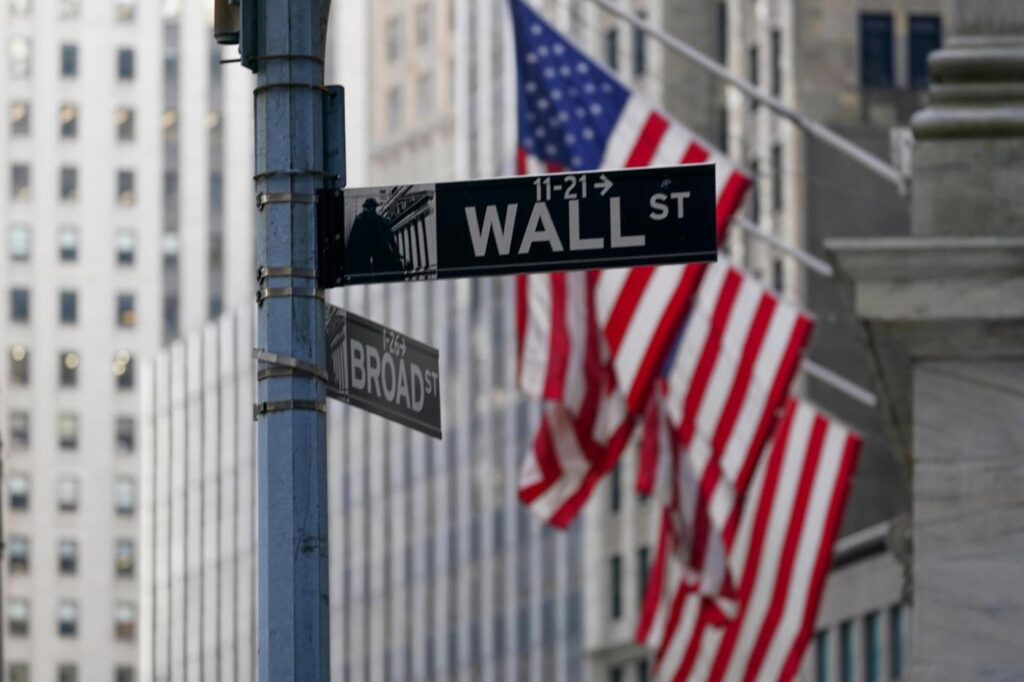
By STAN CHOE
NEW YORK (AP) — Stocks around the world are tumbling Friday, as even a gangbusters report on the U.S. jobs market can’t pull Wall Street’s focus off its worries about the war in Ukraine.
The S&P 500 was 1.7% lower in morning trading, following up on sharper losses in Europe after a fire at the continent’s largest nuclear plant caused by shelling raised worries about what’s next. Markets worldwide have swung wildly over the last week on worries about how high prices for oil, wheat and other commodities produced in the region will go because of Russia’s invasion, inflaming the world’s already high inflation.
Treasury yields sank again as investors moved money into U.S. government bonds in search of safety, and a measure of nervousness on Wall Street climbed.
All the movements came despite a much stronger report on U.S. jobs than economists expected, one described as encouraging and even “fantastic.” Hiring by employers last month topped expectations by hundreds of thousands of workers, more people came back into the workforce after sitting on the sidelines and jobs numbers for prior months were revised higher.
On the inflation front, growth in wages for workers was slower last month than economists expected. While that’s discouraging for workers hoping to keep up with rising prices at the grocery store, for economists and investors, it means less risk the economy may be headed for what’s called a “wage-price spiral.” In such a reinforcing cycle, higher wages for workers would cause companies to raise their own prices even higher.
“The COVID recovery was in full bloom in the jobs report,” said Brian Jacobsen, senior investment strategist at Allspring Global Investments.
“The tricky part is the future, not the past,” he said, as crude oil prices climbed back above $112 per barrel amid worries about pressure on supplies because of the Ukrainian war. “Higher fuel and food costs can eat into consumers’ budgets. Those high costs can be a boon for oil producers and farmers, but not for everyone else.”
Such concerns helped drag the Dow Jones Industrial Average down 519 points, or 1.5%, to 33,275, as of 11:05 a.m. Eastern time. The Nasdaq composite was 2.1% lower.
The losses were widespread, with more than 80% of stocks in the S&P 500 falling. Among the few gainers were Chevron, Exxon Mobil and other companies that can benefit from higher oil prices. The S&P 500 is on track for its third weekly loss in the last four, and it’s down a little more than 10% from its record set early this year.
In Europe, whose economy is much more closely tied to the conflict because of its dependence on oil and natural gas from the region, the losses were sharper. France’s CAC 40 fell 4.2% Friday, Germany’s DAX lost 3.8% and the FTSE 100 in London fell 2.7%.
Russian forces gained ground, shelling Europe’s largest nuclear power plant and sparking a fire early Friday as they pressed their attack on a crucial energy-producing Ukrainian city. But authorities said the blaze was safely extinguished. U.S. Energy Secretary Jennifer Granholm tweeted that the Zaporizhzhia plant’s reactors were protected by robust containment structures and were being safely shut down.
Trading on the Moscow exchange, after briefly opening Monday, has remained closed throughout the week. The value of Russia’s ruble continues to hover below a penny after plunging roughly 30% since the middle of last week. It now takes roughly 104 rubles to get a dollar, up from fewer than 75 at the start of the year. The ruble has dropped as Western governments imposed sanctions that cut off much of Russia’s access to the global financial system.
The price of U.S. oil rose 3.9% to $111.89 barrel. Brent crude, the international standard, climbed 4%, to $114.93 per barrel.
Amid the rush to safety, the yield on the 10-year Treasury fell to 1.70% from 1.84% late Thursday, a big move. It’s well below the 2% level it had reached last month, as expectations built for upcoming hikes in interest rates by the Federal Reserve to rein in inflation.
Stocks had rallied in the middle of the week after Federal Reserve Chair Jerome Powell said he favored a more modest increase to interest rates later this month than some investors had feared. The Fed is set to raise rates for the first time since 2018, though it has a tightrope walk ahead because too-high rates can choke the economy and cause a recession.
Powell warned Thursday that the fighting in Ukraine is likely to further magnify the high inflation troubling world economies. Russia is a key oil producer and prices have been rising as global supplies are threatened by the conflict.
“For a world that was already grappling with worryingly high (cost-push) inflation before Ukraine’s invasion, the surge in commodity prices from the geo-political spill-over is not merely an inconvenience, but rather a binding economic threat,” Mizuho Bank said in a commentary.
___
AP Business Writer Elaine Kurtenbach contributed.
